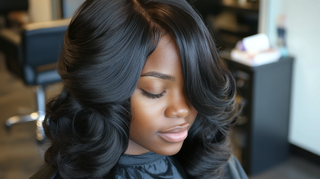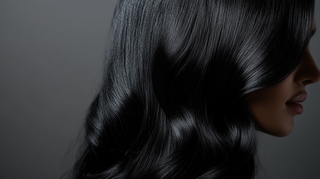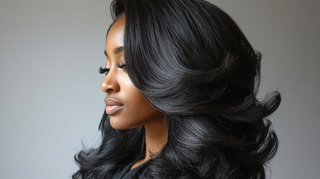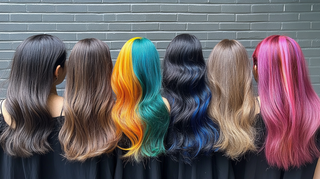Hair extensions are a very good item to add volume and length or inject color into the rest of your hair. However, the key to natural extensions is to opt for the right color, finish, and cut. Ideally, hairdressers should do the extensions since they know the best way to cut them. However, with many of the salons that were supposed to provide the service closing because of the pandemic, it is much harder to get a professional to do this. If you are not getting the natural look you desire, the following ideas will help you get there.
Getting Ready: Essential Steps for Cutting Hair Extensions

Prior to cutting the hair extensions, make sure they are secured. Attach the extensions and leave them in a way that follows the silhouette that you want, separating your hair parts if necessary. Standing up allows you to observe what impression the job is making. Always trim extensions when they are well-dried so their length can be measured correctly. Avoid using regular scissors and ensure you have the right tools at hand, like hair shears, hair clips, hair pliers, ties, a fine-tooth comb, and mirrors.
Perfecting Your Skills: Techniques for Cutting Hair Extensions
Your tasks should be to reach a smooth transition. Here are the four effective tactics that I used to ensure seamlessness in blending hair extensions:
- Point Cutting: Point cutting involves blending the ends and eliminating sharp lines. At the end of such an extension, put it up, cut it into your hair, and hair extension cut upwards directly at a consistent width to remove the thickness without affecting the length.
- Slicing: It's great for tying hair around the face as well as for creating layers. Grip your hair and use your fingers to hold some of the extensions. Then, go in a bias from up to down and make the left part the natural length of your hair. The shears are slightly open and close slightly while cutting.
- Blunt Cutting: Guide the area that becomes sleek with your fingers, direct your hair through it and cut it straight across. There are two options for ending your hair: you can opt for a blunt or the point-cutting method for a smoother but also cute look.
- Slithering: The method removes the bulk hair and confers a softer appearance. With the shears open and moving, glide the scissors from the midshaft to the ends, piping down several extensions each time.
If you don't want the hair to come out from under your extensions, plait the lower half of the hair and flatten it against the head with bobby pins. However, clip-in extensions are the best way to apply them directly onto the pinned braid for a more seamless blend.
Extra Tips and Expert Tricks

Cutting hair extensions at home can be quite intimidating at first, but with the right materials, tools, and the appropriate method, you can look like a pro yourself. Your extensions should look natural and be a part of your hair to not give you a disguised appearance. Consequently, you should pay attention to several other tips and techniques. These instructions are a natural guideline for you to make your hair extensions more beautiful while maintaining their health, and in this way, you will achieve the maximum output of your labor.
- Opt for Curls or Waves: Attaching curls or waves to your hair extensions is an excellent way to greatly increase the realistic look of the hair and, hence, the integration of hair extensions into your hair.
- Be Weight Conscious: Even micro hair extensions are too heavy to be added to your natural hair, only towards getting a good distribution of hair strands. Choose extensions based on your hair density: 220 grams for thick hair, 160 to 180 grams for thin hair, 180 to 200 grams for normal hair.
- Don't Overdo It: When clipping your hair extensions, go with a bit more than you plan to give a lesser layer of your natural hair, resulting in less top hair. If your natural hair is the first most acclimated to it, created with a gentle layer between your natural hair and extensions, it should be smooth.
- Allow for a Margin of Error: Leave your hair extensions an inch longer than the desired length. It is much easier to cut more if the extension is still too long rather than to risk cutting too much off in the first place.
- Use Numbers: An excellent practice to keep track of your layered tape extensions is to number them, maybe with a marker or a paper tag. This makes re-installation simple and ensures a consistent result.
If you don't have a professional stylist nearby and you are really eager to cut your hair extensions, you will merely benefit from all these kinds of directions above. The best results will always be achieved by accurately utilizing appropriate tools.




